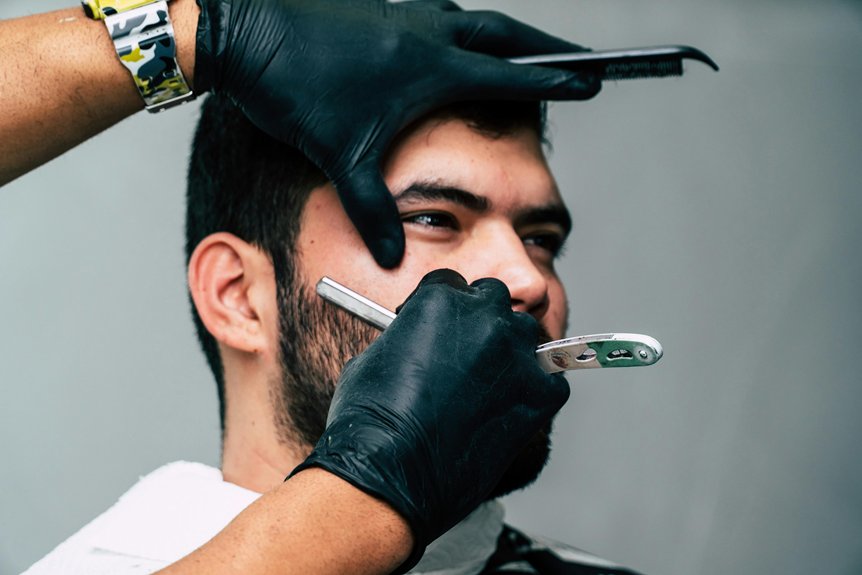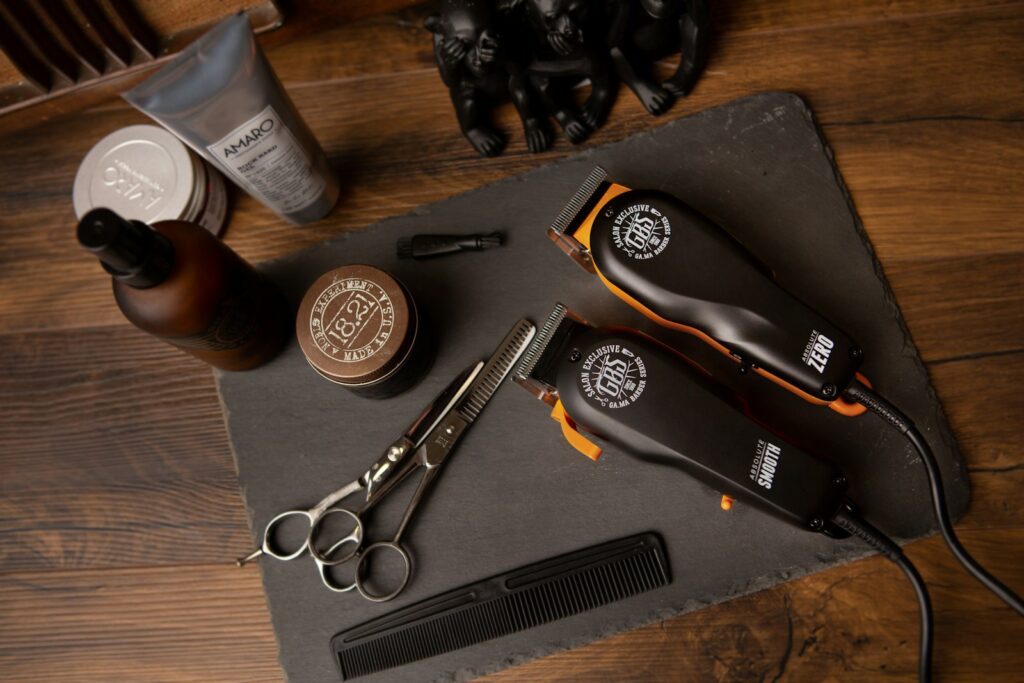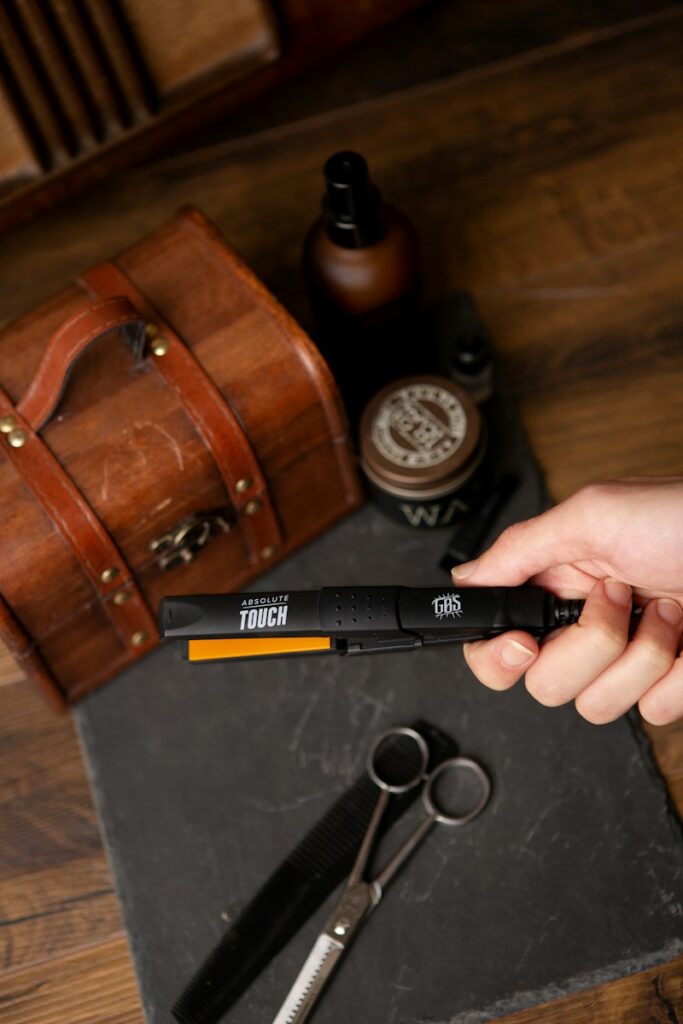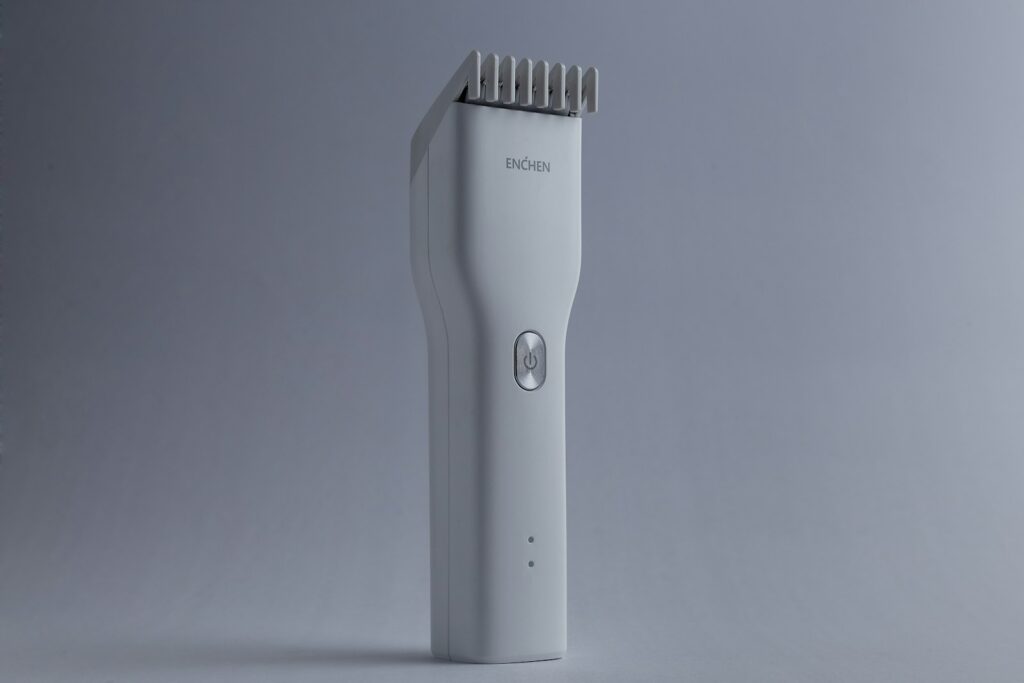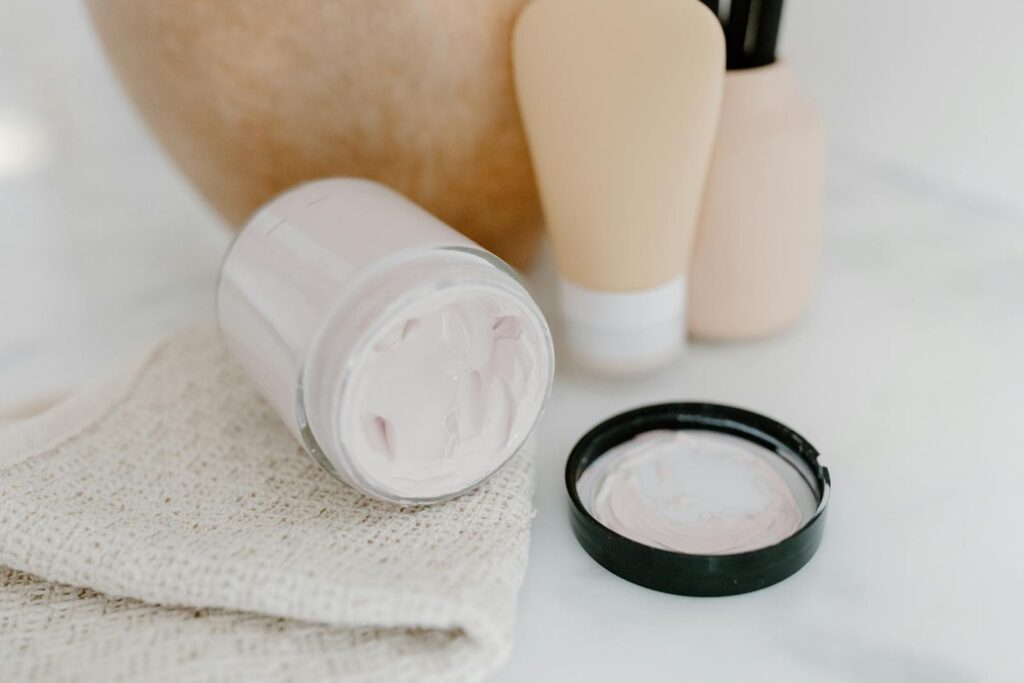Mastering the art of beard trimming requires the right tools, precision, and patience. It’s vital to start with a clean, dry beard and use a brush to align the hairs. By beginning with longer guards, one can avoid over-trimming, while focusing on natural growth patterns prevents patchiness. Regular maintenance, including weekly trims and conditioning, guarantees a healthy appearance. Find out how to achieve a balanced, well-groomed look that enhances your personal style.
Key Takeaways
- Begin with a clean, rinsed beard to better assess areas needing trimming and shaping.
- Use electric clippers for defining neckline and cheek lines, ensuring a sharp, clean look.
- Trim the neckline just above the Adam’s apple for a natural and balanced appearance.
- Apply beard oil or balm after trimming to condition and enhance beard texture.
- Conduct weekly trims, removing minimal length, to maintain shape and avoid unevenness.
Essential Tools and Preparation for Your Beard Trim
When preparing for a beard trim, it’s essential to gather the right tools and products to guarantee precision and ease. A beard brush aligns hairs, revealing the beard’s natural shape, while a beard comb detangles for a smoother trim.
Electric clippers, like the Brio Beardscape, define neckline and cheek lines, ensuring a sharp appearance. Trimming scissors help snip stray hairs on medium and long beards.
Optional products like beard washes, softeners, and oils can enhance the trimming process. Incorporating beard softener enhances texture and manageability, making the beard look shinier and healthier. Start with a clean, rinsed beard, using tools to shape and assess areas needing attention, focusing on accuracy over volume.
When and How to Start Trimming Your Beard
Having gathered the necessary tools for a successful beard trim, it’s important to know the right time to start trimming. Skipping early trims can lead to patchiness, so follow this timeline for best results:
- First Month: Let the beard grow naturally. Avoid trimming to establish a full foundation.
- Two Weeks In: Begin trimming the neckline to shape and define boundaries without cutting length.
- 30-60 Days: Focus on cheek lines and mustache. Establish outer lines to refine the look.
For precision trimming, consider using a nose hair trimmer designed for delicate areas, which minimizes the risk of injury.
Techniques for Trimming Different Beard Lengths
For those looking to maintain a well-groomed beard, understanding the techniques for trimming different beard lengths is essential. Short beards require precise definition of outer lines without reducing length. Medium and long beards benefit from electric clippers and scissors to manage fullness and maintain clean lines. The following table illustrates key techniques:
| Beard Length | Tools Needed | Key Techniques |
|---|---|---|
| Short | Clippers, Scissors | Define outer lines, avoid patchiness |
| Medium | Clippers, Scissors | Trim regularly, maintain cheek/neck lines |
| Long | Clippers, Scissors | Contour, remove stray hairs |
Using the right tools and techniques guarantees a well-groomed appearance.
Detailing and Finishing Touches
After the main trimming is complete, focusing on detailing and finishing touches is essential for achieving a polished look. Precision is key to a well-groomed appearance, ensuring each aspect of the beard harmonizes perfectly. Consider these steps:
- Edges and Neckline: Trim the neckline just above the Adam’s apple, softening the back edge near the jaw for a natural look.
- Bottom Edge and Mustache: Use scissors to point cut along the bottom edge, keeping the mustache tidy and off the mouth.
- Final Styling: Apply beard oil or balm for conditioning, then use a brush to shape and assess the final result.
Maintenance and Regular Upkeep
While a well-trimmed beard can enhance one’s confidence, maintaining it requires commitment and regular upkeep. Conducting weekly trims is essential, removing no more than an eighth of an inch to keep the beard looking sharp.
Regularly addressing flyaways and cleaning edges guarantees that the beard retains its shape and doesn’t become unruly. After each trimming session, applying beard oil or balm helps condition and style the beard, enhancing its appearance.
Using a beard brush afterward allows for a thorough evaluation of the beard’s shape. Consistent maintenance not only serves the individual but also presents a well-groomed image to others.
Common Mistakes and How to Avoid Them
Even though trimming a beard can seem straightforward, many common mistakes can lead to undesirable results. To avoid these pitfalls, consider the following guidance:
- Skipping Preparation: Always start with a clean, dry beard. Use a comb or brush to align hairs before trimming, making certain of accuracy.
- Over-Trimming: It’s easy to go too short. Use larger guards initially, gradually reducing them to avoid cutting too much at once.
- Ignoring Natural Growth Patterns: Trim following the natural direction of hair growth. This prevents patchiness and guarantees an even finish.
Styling Tips for a Polished Look
Avoiding common mistakes is just one part of achieving a well-groomed beard; the next step involves honing styling techniques for a polished look.
First, consider the desired shape and length, aligning it with facial features to enhance overall appearance. Use a beard comb to guarantee uniformity and scissors for precise trimming of stray hairs. Applying beard oil can add shine and manageability.
Regularly brushing helps maintain shape, while gentle snipping of flyaways ensures neatness. For those serving others, a tidy beard shows professionalism and care.
Consistent upkeep is vital, reinforcing the commitment to a refined, well-groomed presentation.
Final Thoughts
Achieving beard trimming requires the right tools, patience, and regular upkeep. By starting with a clean, dry beard and using longer guards, one can shape and refine with precision, focusing on natural growth patterns. Regular maintenance, including weekly trims and conditioning, guarantees a healthy, polished appearance. Avoid common mistakes by staying attentive to detail and not rushing the process. With practice and care, attaining a well-groomed beard becomes an attainable and rewarding routine.
